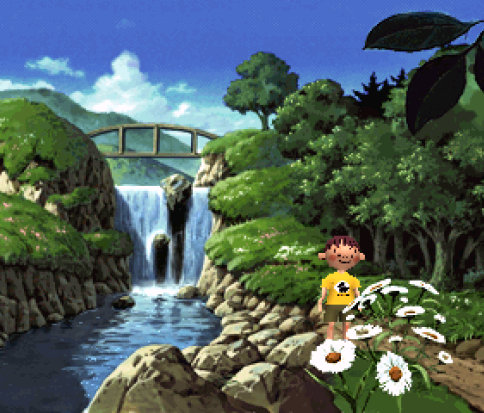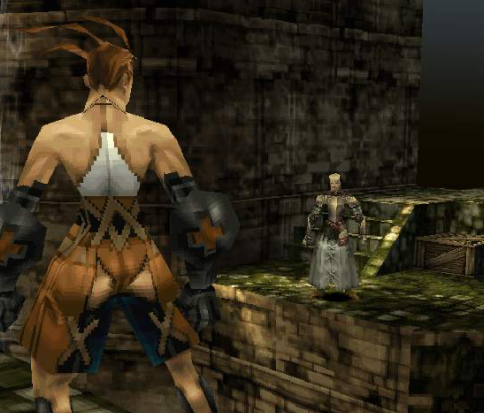We’ve been witnessing a shift in the video game scene as more and more people openly embrace and enjoy gaming. When I was younger, video games were often regarded as an unsophisticated form of entertainment. However, the perception is changing, and individuals are no longer hesitant to admit their love for video games.
In the past, even mediums like photography and film faced skepticism regarding their status as art forms. However, over time, their artistic value became widely recognized. Similarly, I believe, that video games are currently undergoing a similar process of recognition and appreciation as an art form.
Video games offer opportunities for artistic expression. Like photography and movies, video games are evolving into recognized art forms. They can evoke emotions, convey messages, and challenge norms. By embracing their artistic potential, video games can offer unique experiences and be appreciated as more than just entertainment.
To address the growing demand for diverse gaming experiences, it is crucial to attract people from different demographics. But the problem I see is that we still want to put the newcomers into an already established label, a predefined term, called “gamers”.
A person who plays games, but not a gamer
In contrast to movies, which are widely accepted as a mainstream entertainment medium, gaming is not as socially accepted. I believe that the media and companies perpetuate stereotypical* beliefs about gaming by oversimplifying people who engage in gaming as just “gamers.” Gaming should be recognized as something more than colourful RGB LEDs and gaming chairs.
Playing games does not require one to identify as a gamer. I’m not a gamer. I just play lots of video games. There’s absolutely no need to conform to any specific gamer image or lifestyle if it doesn’t resonate with you. We don’t have to decorate our experiences with RGB lighting just to fit in. Gaming is about enjoying the games themselves, not about conforming to a certain style. (If you want a gaming chair or any other accessories, that’s perfectly fine, I just used them as examples.)
Just like watching movies doesn’t automatically turn everyone into film enthusiasts or filmbros, playing games doesn’t require transforming your entire environment or adopting a particular gamer persona. You can simply enjoy a game without feeling the need to label yourself as a “gamer.”
You can play Hello Kitty Island Adventure and World of Warcraft simultaneously if that’s what you enjoy. Remember, it’s your own personal preference, and you have every right to embrace the games you love without feeling pressured to change anything about yourself or your life. Gaming, at its core, is an activity that allows individuals to experience a range of emotions. However, ultimately, it is just a game. There is no obligation to do anything beyond just playing in the game itself.
Video Games are Multi-Dimensional
While standardized user experiences and game design methodologies have their merits, I believe there’s great value in exploring more experimental approaches. Games shouldn’t always be bound by a checklist of requirements. That’s why I find indie games so appealing. Indie developers aren’t constrained by the pressure to deliver massive AAA content or cutting-edge graphics.
Video games can tell stories like movies, but what sets them apart is the player’s ability to control and interact with the narrative. This interactivity opens up endless possibilities for different applications and stories, both experimental and conventional.
Unlike watching movies with fixed endings, video games provide interactive experiences. While some games allow outcomes to be influenced by player choices, we also have the ability to play someone else’s saved game, venturing through predetermined and altered paths.
Consider this unconventional example, imagine purchasing used memory cards or game cartridges from previous players for consoles like the PS1, PS2, or 3DS. When you load these games, you pick up where someone else left off. You might not know the events leading up to the last save, but that’s part of the intriguing beauty of gaming. Each player can have a distinct experience, different from those who started the game from the beginning.
Alternatively, we can opt for a traditional approach and play a visual novel or an RPG. In these games, our actions have consequences, leading to different scenarios that not every player will experience. The diversity of choices adds depth and individuality to the gaming experience.
Styles Shouldn’t Limit Enjoyment
Style should never deter us from exploring a game. Personally, I’m not a fan of anime, yet Persona 5 remains one of my all-time favourite video games.
While art direction can be a decisive factor in our attraction to games, it’s important to push past initial impressions and allow ourselves to engage in gameplay. Sometimes, the true enjoyment of a game lies beyond its visual aesthetics, and by giving it a chance, we may discover hidden gems and unique experiences.
Many people hesitate to try games with “old graphics,” perhaps associating them with simplicity and childishness. However, style should never become a barrier that prevents us from enjoying a game. Here are some of the games I play that are considered graphically old, yet they remain thoroughly enjoyable to me.

Boku no Natsuyasumi offers a truly unique experience, allowing players to relive a summer vacation in Japan through the eyes of a nine-year-old child. Its captivating beauty lies in its simplistic gameplay and immersive exploration mechanics, allowing us to discover and appreciate the breathtaking landscapes we encounter.

Another example, Vagrant Story, is a game with a captivating story, immersive atmosphere, unique gameplay, distinctive visuals, and artistic depth. Its narrative is filled with intrigue, vendettas, and supernatural elements. The game features exceptional localization, impressive visuals with a dark art style, and a strategic battle system. With its distinctive art direction, Vagrant Story stands out visually. It explores deep themes of identity, morality, and consequences, showcasing its artistic expression.
These are just a few examples that highlight how video games have the power to effectively capture and convey unique experiences, no matter how they look. There are countless other games that showcase the diverse and immersive storytelling capabilities of the medium.
There is always more than one.
The video game medium offers artists a canvas to go beyond player and publisher expectations. It is the creators, developers, and artists who will propel this medium to its rightful place. Games ranging from avant-garde experiments to indie titles and popular franchises like Call of Duty etc. can coexist.
By embracing all genres and ideas, and welcoming both blockbuster games and niche stories, we can cultivate an inclusive environment where everyone can explore and enjoy gaming without limitations. This could allow gaming to transcend its boundaries and become an art form/entertainment type accessible to everyone, not just gamers.
Video games can also become a preferred form of entertainment for some. Even if gaming isn’t the primary choice of entertainment for everyone**, raising awareness about the vast selection of games available can help more people to realize and appreciate gaming as a medium capable of creating beautiful experiences.
I encourage discussions about games in our daily lives, promoting the games and stories that others may find interesting. Exploring indie titles and revisiting games from older consoles can be enlightening. By experimenting with different gaming experiences, we can dispel the notion that gaming is solely about mindless shooting or wasting time.
In conclusion, the perception of video games is shifting as more people from diverse backgrounds embrace them. Video games offer unique artistic expression, captivating storytelling, and diverse experiences. We should avoid labelling people as “gamers” and instead focus on the games and the experiences. Regardless of graphics or style, video games have the power to evoke emotions and create memorable moments. By exploring different genres and promoting gaming discussions, we can break stereotypes and appreciate gaming as an accessible and enriching form of entertainment.
—
Notes:
*These stereotypes are largely influenced by the historical dominance of men, especially socially excluded men/children, within the gaming demographic. This demographic imbalance has led to the emergence of alternative cultures and gatekeeping tendencies. Consequently, publishers have been hesitant to create games for diverse audiences, limiting accessibility for others who wish to engage in gaming. This lack of inclusivity is one of the reasons why some people may shy away from engaging in gaming.
**Currently, the cost of playing games remains a barrier for many individuals. Until gaming becomes more accessible through services like cloud gaming and affordable, powerful technology, we won’t be able to create video games that cater to a wider audience.





